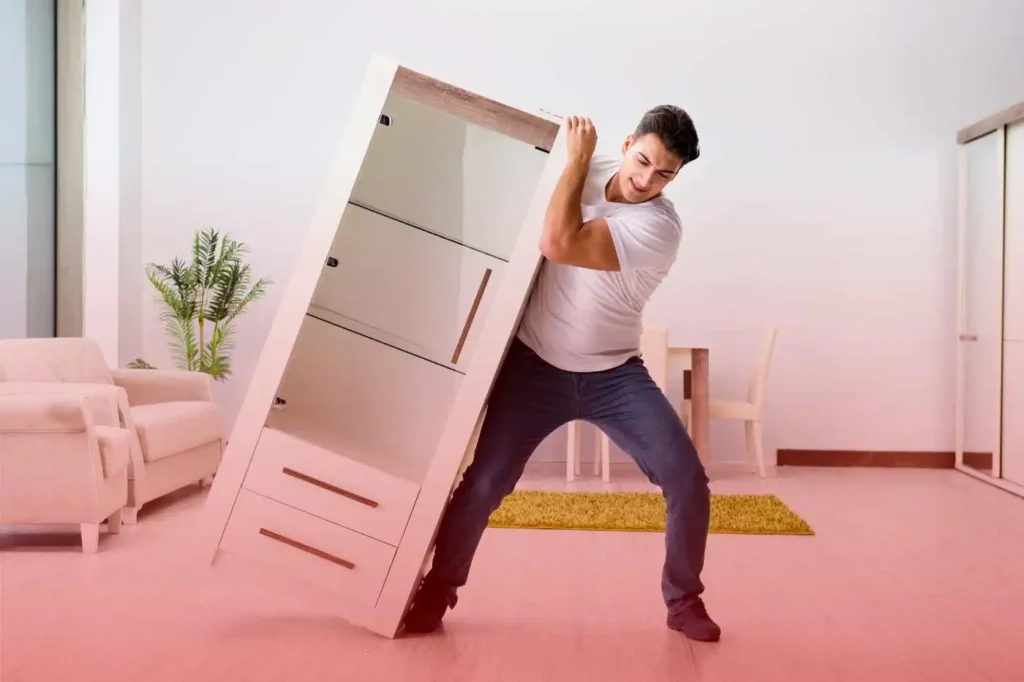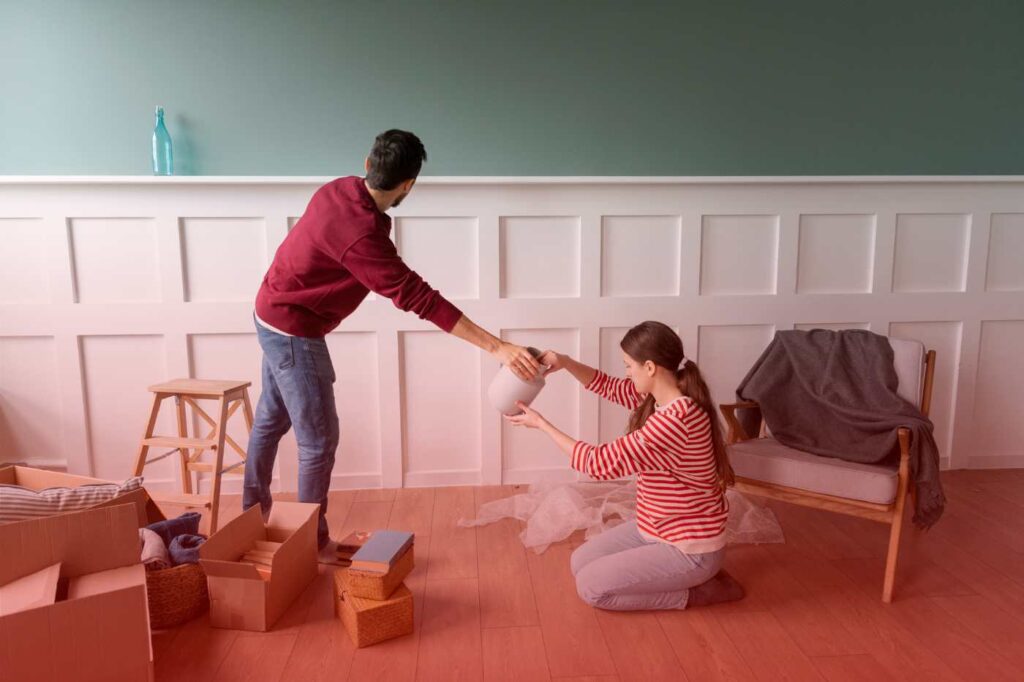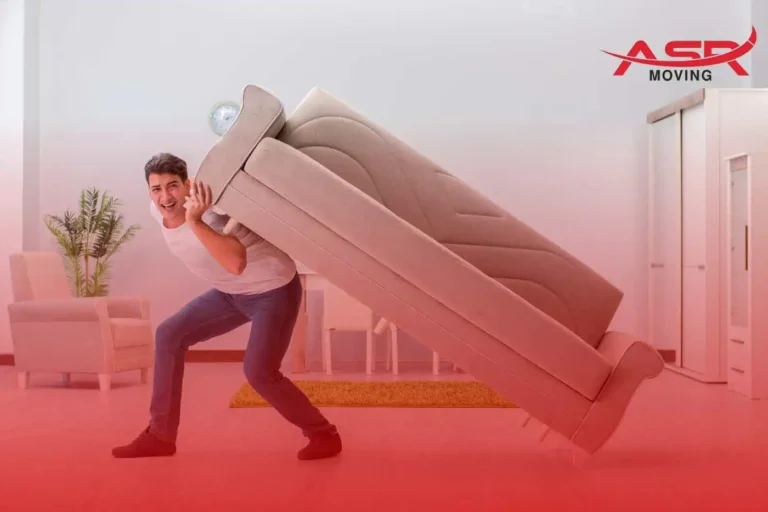Packing furniture takes more than just wrapping it up and hoping nothing breaks. One small mistake can lead to scratches, dents, or even injuries during the move. If you’re dealing with heavy pieces like sofas, bed frames, or wardrobes, handling them the right way is key to a smooth moving day.
Simply tossing a sheet over your table won’t cut it. Without proper disassembly, padding, or lifting strategy, damage becomes much more likely. On the other hand, using too much tape or the wrong tools can slow things down and create frustration.
This guide covers the essential do’s and don’ts for packing your furniture safely and efficiently. These tips will help you avoid costly damage, save time, and make the entire move less stressful.
8 Do’s for Packing Furniture the Right Way

1. Create a Furniture Inventory Checklist
Start by listing every furniture item you plan to bring. This gives you a clear overview and helps you decide what’s worth moving. Let go of anything you won’t use in your new space—don’t waste time and effort on items that no longer serve a purpose.
2. Inspect Each Furniture Piece Before You Pack
Examine each item closely for scratches, dents, or signs of wear. Take photos before packing—these serve as visual proof for insurance claims and can guide you during reassembly. It’s a smart way to protect yourself if damage occurs during the move.
3. Empty Furniture Completely
Remove anything inside cabinets, dressers, or shelves. Take out drawers, glass panels, or any detachable parts. Doing this reduces weight, prevents shifting during transit, and lowers the risk of breakage or injury during loading and unloading.
4. Choose the Right Packing Supplies
Make sure you’re using materials that actually protect your furniture, not just fill space. Here are the essentials:
- Bubble wrap – Ideal for delicate surfaces and fragile parts like table legs or glass tops.
- Furniture blankets – Great for wrapping large items like sofas, dressers, or bed frames. They shield against scratches and dents.
- Packing tape – Use strong tape to secure wraps and label boxes.
- Shrink wrap – Keeps fabric-covered furniture clean and protected during transit.
- Stretch wrap – Helps hold cushions or furniture covers in place. Also useful for wrapping around padded items.
Skip the thin, cheap materials. Investing in good-quality supplies means better protection and less chance of damage.
5. Disassemble Large or Awkward Items
Take apart furniture that’s too bulky or difficult to carry in one piece. Unscrewing legs, arms, or shelves makes them easier to move through tight hallways or doorways.
Always label each piece so you’ll know how to reassemble them. Place screws, bolts, and hardware into zip bags and tape them securely to the matching furniture.
6. Wrap the Right Way
Proper wrapping keeps furniture secure and protected. Use stretch wrap to hold covers or protective layers in place. For fragile or expensive items, apply two layers of padding, such as bubble wrap followed by blankets. Furniture legs should be wrapped individually to prevent chips, cracks, or scratches.
7. Protect Furniture Corners and Surfaces
Corners are usually the first to get scratched or dented. Cover them using thick cardboard or corner protectors. Start by wrapping surfaces with soft packing paper to prevent scratches. Then, add a layer of bubble wrap or thick blankets for added protection during the move.
8. Measure Doorways and Hallways in Advance
Know what you’re working with at both your current and new location.
- Measure door widths, staircases, and hallways
- Compare with your largest furniture pieces
- Plan how to move each piece or disassemble as needed
Doing this early can prevent frustrating delays on moving day.
5 Don’ts That Can Damage Your Furniture During a Move

1. Don’t Start Without Proper Packing Supplies
Jumping into packing without having the right materials sets the stage for damage. If you pack in a hurry or use whatever you have lying around, it’s easy to make avoidable mistakes. Forgetting essential tools like corner protectors or furniture blankets means your items are left vulnerable to scratches, dents, or cracks during loading and transport.
2. Don’t Use Bubble Wrap as the First Layer
Bubble wrap might seem like the go-to for protection, but placing it directly on furniture can cause harm. It can trap moisture, especially in humid conditions, which leads to surface damage like stains or warping. Always start with soft packing paper as the first layer to create a breathable barrier before adding more protective layers.
3. Don’t Leave Disassembly to the Last Minute
Waiting until moving day to disassemble furniture adds unnecessary stress. You’re more likely to rush, lose small parts, or force pieces apart, leading to stripped screws or broken joints. Breaking down furniture early lets you do it safely and keep all components organized.
4. Don’t Assume You Can Do It All Yourself
Trying to move everything solo—especially heavy, antique, or sentimental pieces—can result in costly mistakes. Without proper lifting techniques or tools, you risk damaging the furniture or injuring yourself. Hiring professionals or getting help for tricky pieces is a smart move, not a weakness.
5. Don’t Skip Labeling and Hardware Storage
It’s easy to toss bolts and screws into a random box or forget where each piece came from. But once it’s time to reassemble, you’ll be stuck guessing. Labeling each part and storing hardware in labeled zip bags saves time, effort, and frustration later. Organization during packing always pays off.
Bonus Tips for a Smooth Furniture Packing Process

Even with the basics covered, a few extra tricks can make the packing process much smoother—and safer.
Use Furniture Sliders and Dollies
After wrapping your furniture, sliders and dollies can save your back. Sliders help you glide heavy pieces across floors without scratching them. Dollies, especially ones with wheels, make transporting bulky items faster and less strenuous.
Clear All Paths Before Lifting
Before you start moving anything, walk the path you plan to take. Clear out any obstacles like rugs, boxes, or small furniture. This helps you avoid tripping and creates enough space to move large pieces without squeezing through tight corners.
Communicate if You’re Moving with Others
If you’re working with friends or family, talk through the plan before you lift. Assign roles and use clear verbal cues while moving, like “lift on three” or “stop.” This prevents confusion and reduces the risk of accidents.
When to Call Professional Movers for Help
There are times when packing and moving furniture by yourself just isn’t worth the risk, effort, or stress. Calling in professional movers makes sense in these situations:
- Handling Large or Fragile Items: If you’re dealing with heavy furniture like pianos, oversized sofas, glass cabinets, or antiques, movers have the tools and experience to protect them.
- Navigating Tight Spaces” Stairwells, small doorways, or apartments in high-rise buildings can turn a simple move into a complicated one. Movers know how to maneuver in tight spots without damaging anything.
- When You’re Short on Time or Help: If you’re on a deadline or don’t have enough people to assist, professionals can speed things up and get it done efficiently.
- When Quality and Safety Matter Most: Hiring movers gives peace of mind. Your furniture is insured, and you won’t risk injury or damage by doing everything yourself.
Even if you only need help with specific pieces, calling professionals can save time, protect your items, and make the process smoother.
Wrapping Up
Packing furniture correctly can make the difference between a chaotic move and a smooth one.
Follow the do’s—like disassembling bulky pieces, wrapping with the right materials, and lifting safely—to protect your belongings and your back.
Skipping the common mistakes saves time, money, and frustration once you settle into your new place.
Need help with heavy lifting or unsure how to pack large items? Let the pros take over.
Asr Moving offers stress-free moving services built around your needs.
With Asr Moving, you get a reliable local mover in Calgary, Edmonton, or the nearby area who knows how to handle large items with care. Let us take the stress out of your move so you can enjoy your new home from day one.



